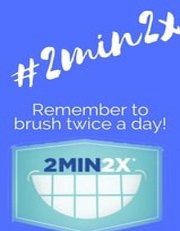Tooth decay is the #1 chronic childhood disease in America; 5 times more common than asthma and 4 times more common than obesity.
Half or more of children will have had tooth decay before entering secondary school.
February is Children’s Dental Health Month, a time to spread awareness around the crippling children’s oral health crisis that affects healthy growth and development for millions of children.
“Untreated tooth decay brings a lifetime of consequences for a child’s speech, ability to eat properly, self-esteem, sleep, academic performance and attendance, development of permanent teeth, and can even be fatal,” says Dr. Leslie Renee Townsend, DDS, Dental Director for Jefferson Dental Care.
While tooth decay is both preventable and treatable, nearly one-quarter of all young children will never have the cavities in their primary teeth filled; rates that affect minority and low-income children disproportionately.
“Parents play an enormous role in ensuring that kids are diligent about their dental care routine, however rates of decay and gum disease in adults signal that there needs to be a shift in how households approach oral health,” says Dr. Townsend.
There are gaps between ideology and practice of dental care in adults that impact kids’ habits. A 2013 Gallop Poll reported that only about 65 percent of adults visited the dentist for their annual visit, a stagnant figure that sat unchanged from the previous poll taken in 2008.
Similarly, one-third of adults admit to not brushing their teeth twice daily and rates of flossing are even more abysmal.
“The great news is that cavities are preventable. But if kids are to stay healthy, adults have to step up and practice good oral hygiene,” says Dr. Townsend. “Kids emulate behaviors that they see.”
Here are easy tips to help parents improve daily dental care routines for their children:
- Let each family member pick their toothbrush, manual or electric doesn’t matter so much as brushing for the recommended two minutes, twice daily
- Floss between each tooth to clean the areas that a toothbrush alone cannot reach, and assist young children who do not have dexterity
- Have young children visit an orthodontist to correct habits such as thumb-sucking and nail biting, and have older children visit to correct alignment issues that impact normal function
- Wipe down babies’ gums after feedings, and use a soft toothbrush to clean all baby teeth in a child’s mouth
- Schedule a child’s dental visits every six months for exams, x-rays and teeth cleaning. A child should start seeing a dentist by his or her first birthday.
For more dental care tips and resources visit www.givingsmiles.com


